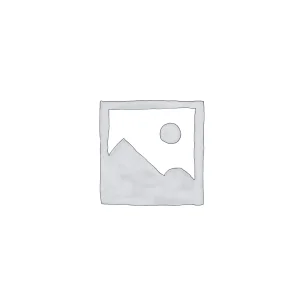Understanding WordPress GDPR Compliance
Navigating the intricate landscape of data privacy laws can be a daunting task for website owners, especially with the implementation of the General Data Protection Regulation (GDPR) across Europe. As individuals are increasingly concerned about their online privacy, ensuring that your WordPress website complies with GDPR is not just a legal necessity, but also an ethical obligation to your users. In this comprehensive guide, we’ll explore the numerous aspects of achieving compliance with WordPress GDPR and the essential steps to take to safeguard user data effectively.
The Importance of GDPR Compliance for WordPress Sites
GDPR was introduced to enhance the protection of personal data for individuals within the European Union (EU). It applies to any organization that processes personal data of EU residents, regardless of where the organization itself is based. This means that if you operate a WordPress site that collects user data, you are required by law to comply with GDPR regulations.
Key Principles of GDPR
- Consent: Users must give explicit permission for their data to be collected and processed.
- Right to Access: Individuals have the right to know what personal data is held about them and how it is used.
- Right to Erasure: Users can request the deletion of their personal information.
- Data Portability: Users have the right to transfer their data from one service provider to another.
- Security: You must have appropriate security measures in place to protect user data.
Failure to comply with these regulations can result in hefty fines and damage to your organization’s reputation.
Strategies for Achieving WordPress GDPR Compliance
1. Implementing Cookie Consent Popups
One of the first steps towards achieving WordPress GDPR compliance involves implementing cookie consent popups. Cookies are small data files stored on users’ devices, and many websites utilize them to enhance user experience. However, according to GDPR, users must provide clear consent before cookies are stored.
- User-Friendly Consent Mechanism: Ensure that the cookie popup is easy to understand and allows users to explicitly consent or deny cookie usage.
- Granular Controls: Go beyond a simple accept/refuse option by offering users different levels of consent for functional cookies, analytical cookies, and marketing cookies. This way, they can choose which cookies to allow.
2. Data Breach Notifications
Under GDPR, organizations are required to inform users if their data is compromised. Developing a robust plan for data breach notifications is crucial.
- Notification Procedures: Establish clear procedures for detecting and reporting data breaches in a timely manner.
- User Communication: Inform users about the nature of the breach, what data was compromised, and the steps being taken to resolve the issue.
3. Data Erasure Features
Providing users with the ability to erase their data is a fundamental requirement of GDPR.
- User Request Functionality: Implement features that allow users to easily request data deletion. Having a clear process helps build trust and ensures compliance.
- One-Click Features: Aim for a one-click solution for users to erase their data to minimize friction and enhance user experience.
4. Contact Information for Data Privacy Officer (DPO)
If your organization processes a significant amount of personal data, designating a Data Privacy Officer (DPO) is advisable.
- Dedicated Contact Forms: Implement contact forms on your website for users to reach out with data-related inquiries.
- Transparent Communication: Make the role of the DPO clear on your site, and ensure users know how to contact them.
5. Newsletter Unsubscribe Options
GDPR mandates that users have the right to unsubscribe from promotional communications.
- Easy Unsubscribe Links: Implement straightforward unsubscribe options that users can find effortlessly without convoluted processes.
- Confirmation of Unsubscribe: Ensure that users are sent a confirmation when they successfully unsubscribe from newsletters.
6. Data Export Functionality
Allowing users to request their data in a readable format is another requirement under GDPR.
- Automated Data Exports: Set up a system where users can request a copy of their data easily, enabling you to send them an archive file compliant with GDPR standards.
- Clear Instructions: Provide step-by-step guidance for users on how to request their data, which helps enhance transparency.
Plugins for WordPress GDPR Compliance
The WordPress ecosystem offers numerous plugins designed to help you comply with GDPR regulations efficiently. These plugins streamline the implementation process while ensuring that privacy policies and user consent requirements are met.
Popular WordPress GDPR Plugins
- Complianz: This powerful plugin assists you in achieving full compliance. It provides cookie consent management, generates privacy policies, and offers customizable features.
- GDPR Cookie Consent: A straightforward option that allows for cookie consent popups and provides users control over their cookie preferences.
- WP GDPR Compliance: Focused on aiding websites with comprehensive GDPR compliance, it includes tools for data requests and customer consent management.
Using these plugins contributes positively to your website’s compliance efforts while minimizing the complexity of managing user data.
Providing Transparency and Building Trust
Creating a culture of transparency regarding data privacy practices is vital not only for compliance but also for building and maintaining customer trust.
- Clear Privacy Policies: Ensure that your website has a well-defined privacy policy that outlines how user data is collected, processed, and securely stored.
- Regular Updates: Keep your privacy policies and data handling practices updated as regulations and your business practices evolve. Regularly inform your users about these changes.
Conclusion
Achieving WordPress GDPR compliance isn’t just about avoiding legal repercussions; it’s about prioritizing your users’ rights and enhancing their trust in your website. By implementing robust cookie consent mechanisms, ensuring data security, providing clear communication about your practices, and utilizing effective GDPR plugins, you can create a responsible digital presence.
Remember that GDPR compliance is an ongoing process. As regulations change and your business grows, continued focus on data protection and user privacy will help you sustain compliance and foster a positive relationship with your users. Prioritizing personal data protection through thoughtful practices and transparency ultimately ensures that your WordPress website meets the demands of GDPR while upholding an ethical commitment to privacy.
WordPress GDPR: Download it for Free
Yes indeed, downloading WordPress GDPR Plugins for free is perfectly feasible and legal.
Truly, even downloading a cracked WordPress GDPR is law-abiding, because the license it is distributed under is the General Public License, and this license permits its free modification.
Thus, be calm: If you are looking to buy WordPress GDPR cheaply or, directly, to download WordPress GDPR Plugins nulled and, thus, obtain it completely free, now, you can do it easily and legally.
Download WordPress GDPR GPL: The option for entrepreneurs beginning their journey
What you call it is irrelevant: WordPress GDPR deals, download WordPress GDPR Plugins GPL, download WordPress GDPR without license or download WordPress GDPR Plugins cracked.
It is something 100% within the law and a necessity for any entrepreneur at the start of their journey.





Reviews
There are no reviews yet.